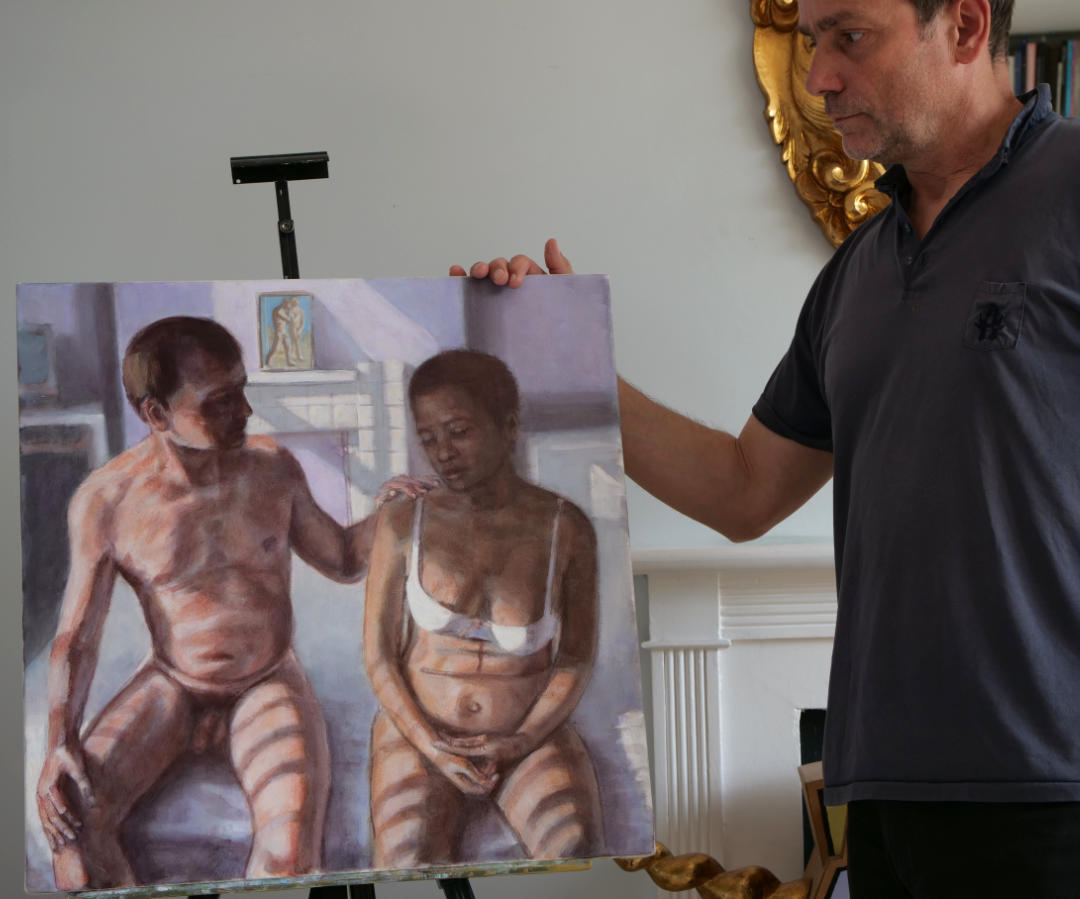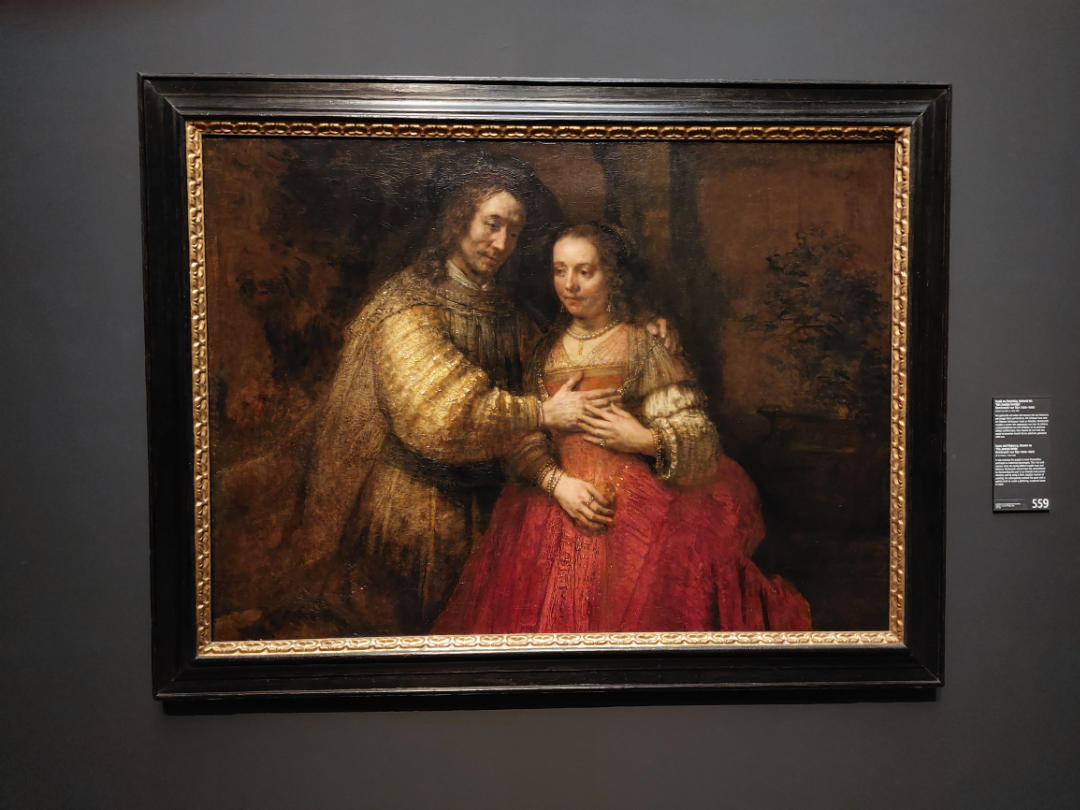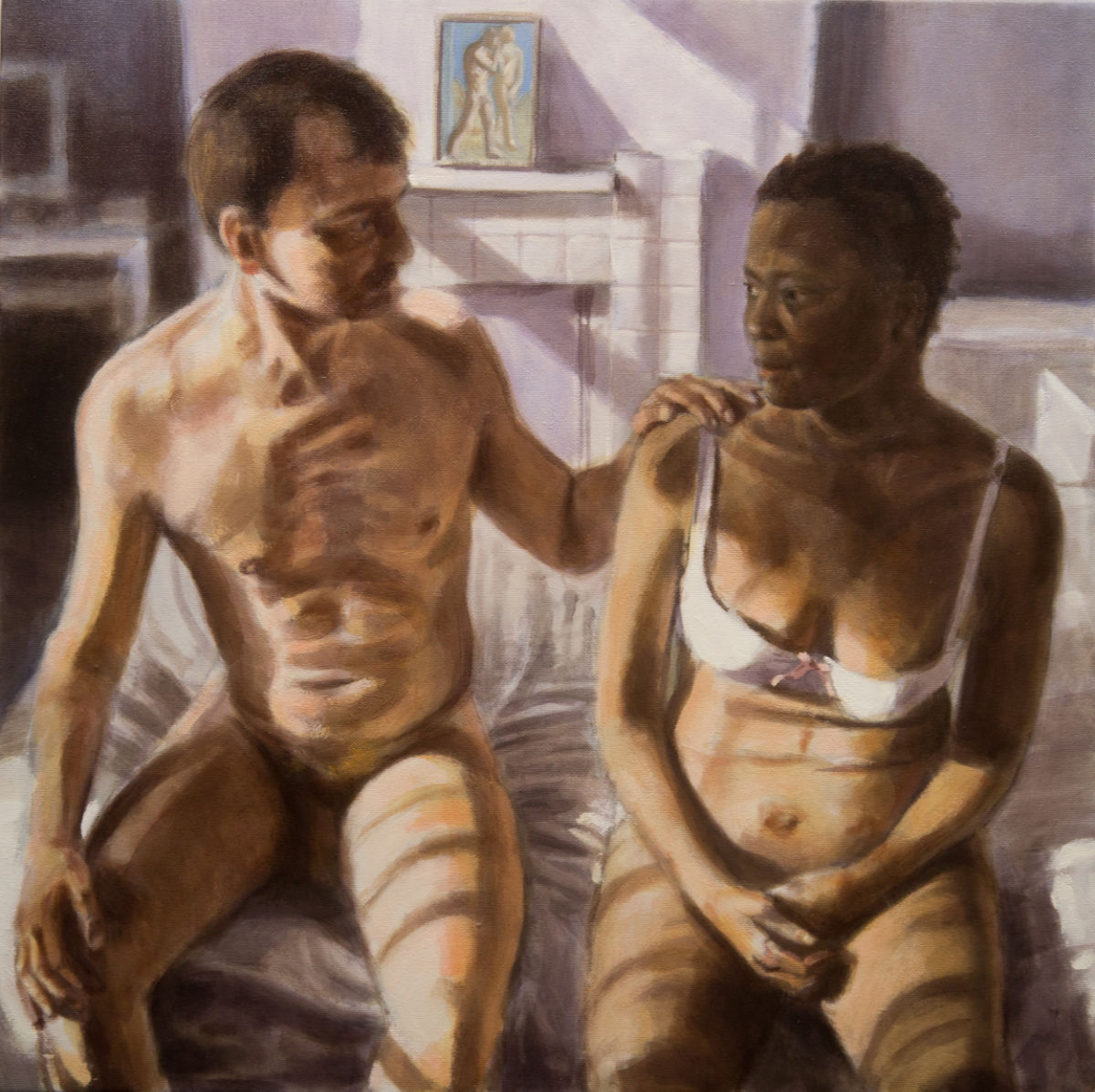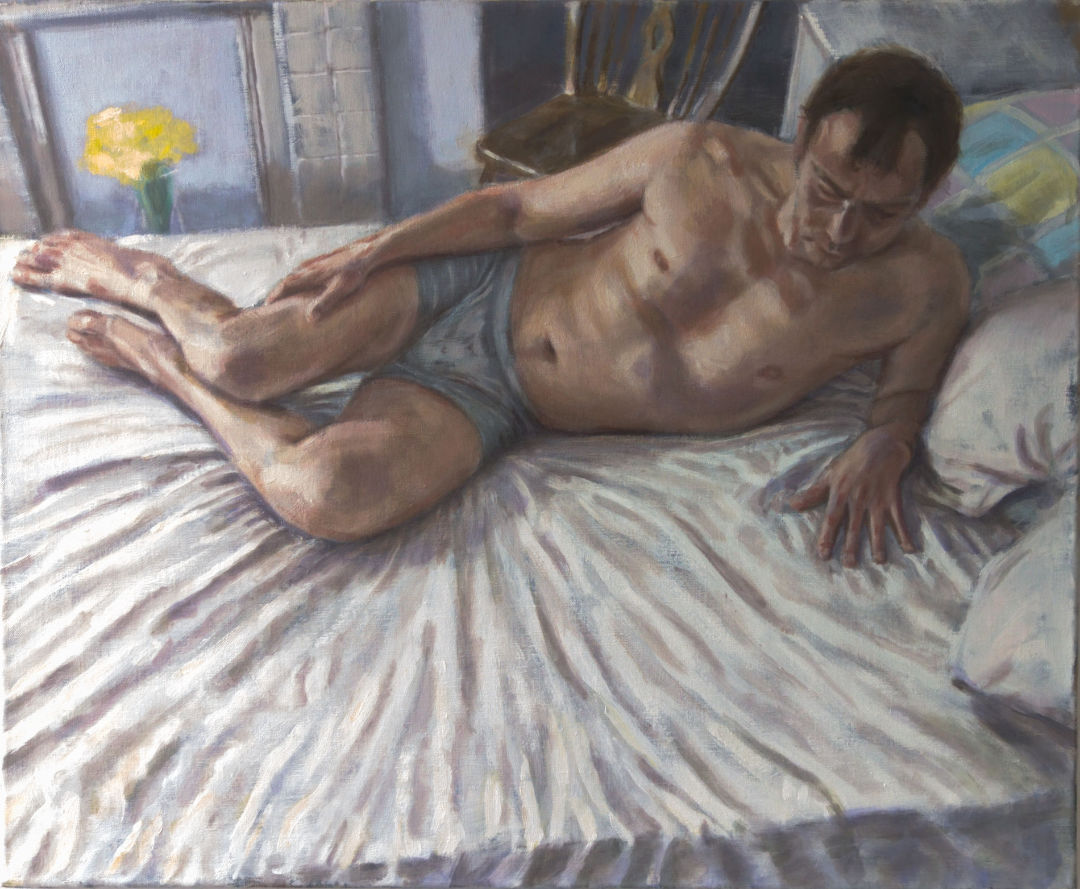
“Man and Woman” is a painting that I thought was finished over ten years ago. I’ve suffered years of nagging doubts, and a real reluctance to show it publicly, such that I finally decided to rework it.
It was only going to be a small amendment, but in the end I had to repaint the entire surface.

It’s debatable about how much the revision is an improvement. The poses are almost identical. Some people might prefer the earlier version. That’s irrelevant. I feel that the later revision is much closer to the painting that I tried to produce in 2009. Although the original version was no doubt true to the reference photos I was working from, I don’t think it captured a true likeness of the female figure.

I should explain something about the background to this painting. My partner had just passed away after a long illness, and in a splurge of activity I set about working on a series of paintings that recorded my lost partner and our relationship. Most had been planned while she was still alive (I had taken reference photos and made preparatory sketches), but sadly her poor health meant I was unable to work on them at the time. This was the last of that series, and for some reason it was the only one I was unhappy with.

The problem with resuming work on a painting after such a long time is that my painting technique has changed over the years. I still start with a monochrome underpainting, but my palette of colours has changed considerably, I use different mediums, and my use of glazes has become more restrained.
Nevertheless it was an interesting exercise. The photo below shows a lighter palette in the revised painting.

Another interesting aspect of this exercise is that I no longer have the original reference photos. Much of the work on my late partner’s face was done from memory, which would normally have been outside my comfort zone. One area where my painting has changed is that I am less beholden to reference photos, and feel more confident to wander off track. I believe that I have achieved a better likeness here by doing just that.
In writing this post, and looking at photos of the two versions side by side, it does feel like a lot of work for only a small change. But it was worth it. I feel happier showing it now.
Edit: “Man and Woman” has since been shortlisted for the LGC Art Prize 2023
A recent post about the competition can be found here: LGC Art Prize








